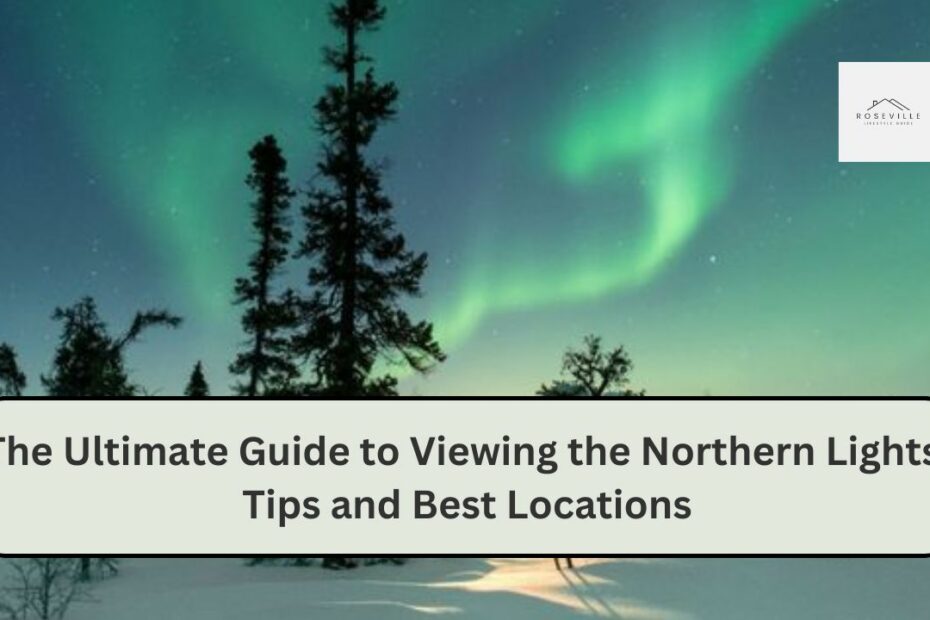The Northern Lights, or Aurora Borealis, are one of nature’s most spectacular phenomena, dazzling observers with their vibrant, shifting colors and patterns. Viewing this celestial light show can be a once-in-a-lifetime experience, but planning your trip requires careful consideration of timing, location, and conditions. This guide will provide you with essential tips and recommend the best locations to maximize your chances of witnessing this breathtaking display.
Understanding the Northern Lights
The Northern Lights are caused by solar particles colliding with Earth’s magnetic field, producing a display of colors in the night sky. These colors typically range from greens to pinks, purples, and even reds, depending on the type of gas particles and their altitude. The phenomenon occurs in the polar regions due to the Earth’s magnetic field directing solar particles towards the poles.
Best Time to View the Northern Lights
- Seasonal Timing
The best time to view the Northern Lights is from late September to early April. During these months, the nights are longest and the skies are darkest, providing optimal viewing conditions. The peak viewing season is during the winter months when the nights are longest and skies are clear. - Time of Night
The Northern Lights are typically visible between 10 PM and 2 AM. However, their appearance can vary, so it’s essential to stay flexible and be prepared for late-night observation.
Choosing the Best Locations
- Tromsø, Norway
Located above the Arctic Circle, Tromsø is renowned for its frequent and vivid Northern Lights displays. The city offers a range of tours and activities that can enhance your viewing experience. Its location and relatively mild climate make it a popular choice for aurora hunters. - Reykjavik, Iceland
Iceland’s capital is another excellent spot for observing the Northern Lights. The city is surrounded by dark landscapes and offers numerous opportunities for aurora viewing. Venture outside the city for even darker skies and better visibility. - Yellowknife, Canada
Yellowknife, located in the Northwest Territories, is renowned for its clear skies and consistent aurora activity. The dry, cold climate reduces cloud cover, providing more frequent and intense displays of the Northern Lights. - Fairbanks, Alaska
Fairbanks is situated in the auroral oval, making it a prime location for Northern Lights sightings. The city offers a range of guided tours and has several nearby dark spots for optimal viewing. - Rovaniemi, Finland
As the official hometown of Santa Claus, Rovaniemi in Finnish Lapland is a charming location to witness the Northern Lights. The city offers various winter activities and has several vantage points for aurora watching.
Tips for Viewing the Northern Lights
- Check the Aurora Forecast
Utilize aurora forecast tools and apps to track solar activity and cloud cover. Websites like the NOAA Space Weather Prediction Center provide real-time aurora forecasts and can help you plan your viewing times. - Avoid Light Pollution
Choose locations away from city lights and artificial illumination. Light pollution can diminish the visibility of the Northern Lights, so find a dark, open area for the best experience. - Dress Warmly
Northern Lights viewing often involves spending long periods outdoors in cold temperatures. Dress in layers, wear insulated gloves, hats, and thermal socks to stay warm and comfortable. - Bring the Right Equipment
For photography, use a DSLR or mirrorless camera with manual settings, a wide-angle lens, and a sturdy tripod. This equipment allows you to capture the vivid colors and intricate patterns of the auroras. - Be Patient and Flexible
Aurora displays can be unpredictable. Be prepared to wait and adjust your plans based on the latest forecasts. The Northern Lights may appear at different times throughout the night.
Frequently Asked Questions
1. What are the best months to see the Northern Lights?
The best months to see the Northern Lights are from late September to early April. During these months, the nights are longest, and the chances of clear skies are higher.
2. Can I see the Northern Lights in cities?
While it is possible to see the Northern Lights from cities, light pollution can hinder visibility. For the best experience, travel to darker, rural areas away from city lights.
3. Do I need special equipment to view the Northern Lights?
To view the Northern Lights with the naked eye, no special equipment is needed. However, for photography, a DSLR or mirrorless camera, wide-angle lens, and tripod are recommended.
4. How long does the Northern Lights display last?
The duration of a Northern Lights display can vary. Some displays last only a few minutes, while others can persist for several hours. The intensity and duration depend on solar activity and atmospheric conditions.
5. Are there any specific apps to help with Northern Lights viewing?
Yes, there are several apps that can assist with Northern Lights viewing, such as Aurora Forecast, My Aurora Forecast, and Aurora Alerts. These apps provide real-time updates on aurora activity and weather conditions.
Conclusion
Experiencing the Northern Lights is a magical adventure that requires a combination of timing, location, and preparation. By choosing the right time of year, visiting optimal locations, and following essential viewing tips, you can increase your chances of witnessing this extraordinary natural phenomenon. Prepare for an unforgettable journey as you chase the shimmering lights across the Arctic skies.
| HOME | CLICK HERE |
| NORTHERN LIGHT | CLICK HERE |
